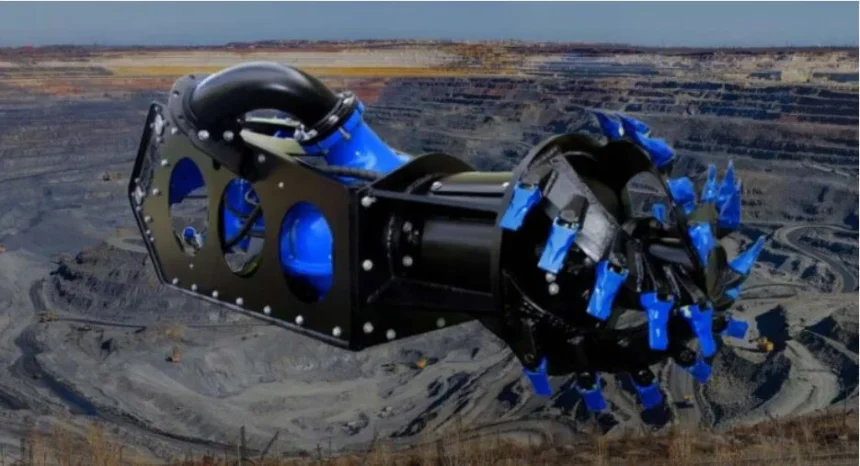Introduction
Lagoon systems play a crucial role in wastewater treatment, stormwater management, and industrial water storage across various sectors. Over time, these water bodies can develop problems that compromise their performance, health, and safety—chief among them, stagnant water. One of the most effective ways to restore lagoon functionality is through dredging. But when exactly is lagoon dredging necessary?
This article explores the warning signs, causes, and benefits of dredging, guiding facility managers, environmental engineers, and municipal authorities through the decision-making process.
The Hidden Risks of Neglected Lagoon Sediment
Lagoon systems are designed to handle and naturally treat organic material and particulates over time. However, when left unchecked, these solids accumulate at the bottom of the lagoon as sludge. This lagoon sediment buildup slowly reduces the lagoon’s treatment capacity and causes stagnation.
Ignoring the problem can lead to:
- Reduced water volume and treatment effectiveness
- Foul odors and mosquito breeding grounds
- Equipment wear and corrosion
- Overflow during heavy rainfall
- Environmental violations and regulatory penalties
These risks grow over time, and without proactive dredging, they can result in system failure or the need for costly emergency remediation.
What Causes Water to Become Stagnant in Lagoons?
Stagnant water is essentially water that does not circulate, flow, or exchange properly. In lagoons, this condition can be caused by several factors:
- Sediment buildup: Sludge restricts water movement and blocks aeration systems.
- Lack of agitation or circulation: Without inflow/outflow or mechanical aeration, water becomes oxygen-depleted.
- Overloaded systems: Excess nutrient input from wastewater or stormwater can overwhelm the lagoon’s natural treatment process.
- Aging infrastructure: Deteriorating valves, pumps, and liners reduce circulation efficiency.
Stagnation leads to poor oxygen levels, anaerobic decomposition, and an increase in harmful bacteria and odors—all indicators that maintenance is overdue.
How Accumulated Sludge Affects Water Quality and Safety?
Sludge accumulation alters the chemical and biological balance of lagoon water. Key impacts include:
- Decreased oxygen levels: Thick sludge layers limit the diffusion of oxygen, leading to anaerobic conditions.
- Elevated BOD and COD levels: Biological Oxygen Demand (BOD) and Chemical Oxygen Demand (COD) rise as organic material breaks down inefficiently.
- Toxic byproducts: Hydrogen sulfide, ammonia, and methane gases may form, creating odor and safety hazards.
- Nutrient buildup: Nitrogen and phosphorus can accumulate, leading to algae blooms and eutrophication.
- Pathogen risk: Stagnant lagoons may harbor harmful bacteria like E. coli or promote mosquito infestation.
When sludge reaches a critical level—typically when it takes up 30% or more of the lagoon depth—water quality declines rapidly.
Common Signs When a Lagoon Needs Dredging
Lagoon dredging doesn’t need to be reactive. Knowing the signs of lagoon sediment buildup can help schedule timely interventions. These red flags include:
- Persistent foul odors
- Increased algae growth or surface scum
- Reduced flow capacity or backup during rainfall
- Dark, thick sludge visible at the bottom or floating
- Poor effluent quality or compliance issues
- Diminished aeration performance
- Short-cycling or failure of pumps and mixers
If any of these issues persist despite surface-level maintenance, it’s likely time to consider a full or partial dredging operation.
How Lagoon Dredging Improves Water Functionality?
Lagoon dredging is essential for restoring the original depth and functionality of water treatment systems. By removing accumulated sediment, dredging increases water retention capacity, which enhances treatment efficiency. It also improves oxygen distribution, making aeration systems more effective and supporting beneficial aerobic bacteria. As a result, effluent quality improves, with reductions in suspended solids, biological oxygen demand (BOD), and harmful byproducts.
Additionally, removing organic buildup helps control odors and reduces strain on pumps, mixers, and piping systems, thereby extending equipment lifespan. Regular dredging also supports regulatory compliance by helping facilities stay within permitted discharge limits. Overall, it rejuvenates lagoon systems for sustained, efficient operation.
Comparing Dredging Methods for Lagoons
There are several dredging methods available, each with pros and cons depending on the lagoon’s size, sediment type, and environmental sensitivity.
Mechanical Dredging
- Uses excavators or clamshell buckets to remove sludge.
- Ideal for shallow or drained lagoons.
- High removal rate but can disturb liner and create turbidity.
Hydraulic Dredging
- Uses submersible dredge pumps to remove sludge as slurry.
- Effective in full lagoons and causes minimal surface disruption.
- Requires sediment dewatering and transport infrastructure.
Geo-Tube Dredging
- Pairs hydraulic dredging with geotextile bags to dewater and contain sludge on-site.
- Cost-effective for temporary or smaller projects.
- Slower but highly environmentally controlled.
Selecting the right method depends on lagoon access, regulatory constraints, sludge volume, and project goals.
Industries and Facilities That Benefit from Dredging
Dredging plays a vital role across various industries and facilities that depend on clean, functional lagoons for efficient dredging operations. Wastewater treatment plants benefit from sediment removal by restoring biological oxygen demand (BOD) and chemical oxygen demand (COD) reduction capacity, while food and beverage facilities manage organic loads and control odors. In agriculture and livestock operations, lagoon dredging helps maintain nutrient balance and prevents runoff, whereas industrial manufacturers use it to manage chemical discharges and cooling systems.
Additionally, resorts, golf courses, and parks enhance their aesthetic appeal and reduce mosquito breeding risks through dredging. Municipal stormwater systems also rely on it to prevent sediment build-up that can lead to clogging and flooding. Regular dredging ensures environmental compliance, improves operational efficiency, and supports long-term sustainability across these diverse sectors.
Conclusion
Lagoon dredging is more than just a maintenance task—it’s a strategic necessity when dealing with stagnant water and lagoon sediment buildup. Left unchecked, these issues compromise performance, endanger compliance, and threaten environmental health. By recognizing the signs of sediment accumulation and understanding the long-term benefits of dredging, facility managers and municipalities can take proactive steps to ensure their water systems run cleanly, efficiently, and safely.
Whether your lagoon serves industrial wastewater, stormwater retention, or biological treatment, timely dredging is the key to maintaining its function and integrity. Don’t wait until stagnation becomes a crisis—act early, dredge smart, and keep your water moving.










 /home/u448362301/domains/theexpotab.com/public_html/wp-content/themes/foxiz/templates/popup.php on line 167
/home/u448362301/domains/theexpotab.com/public_html/wp-content/themes/foxiz/templates/popup.php on line 167